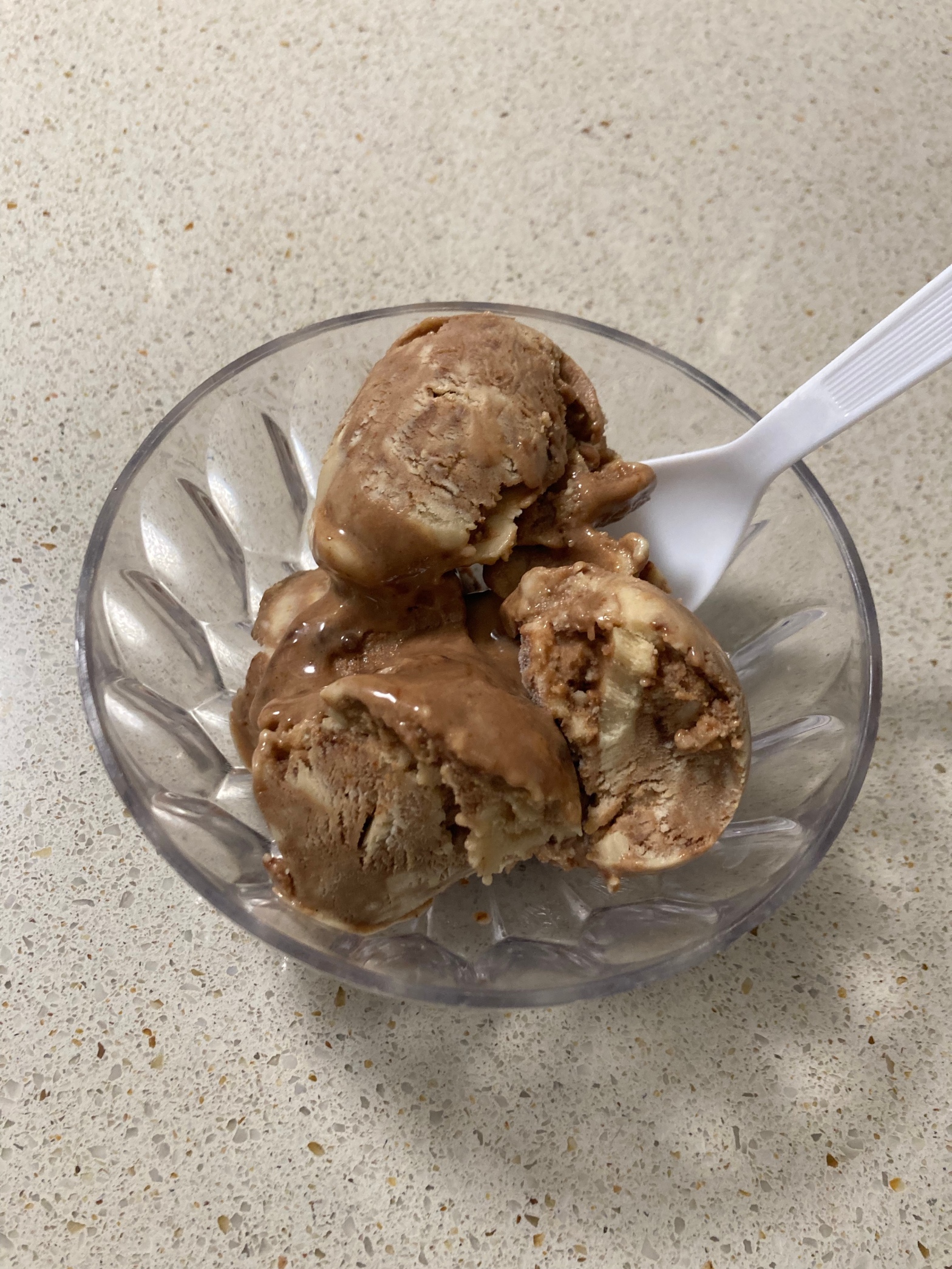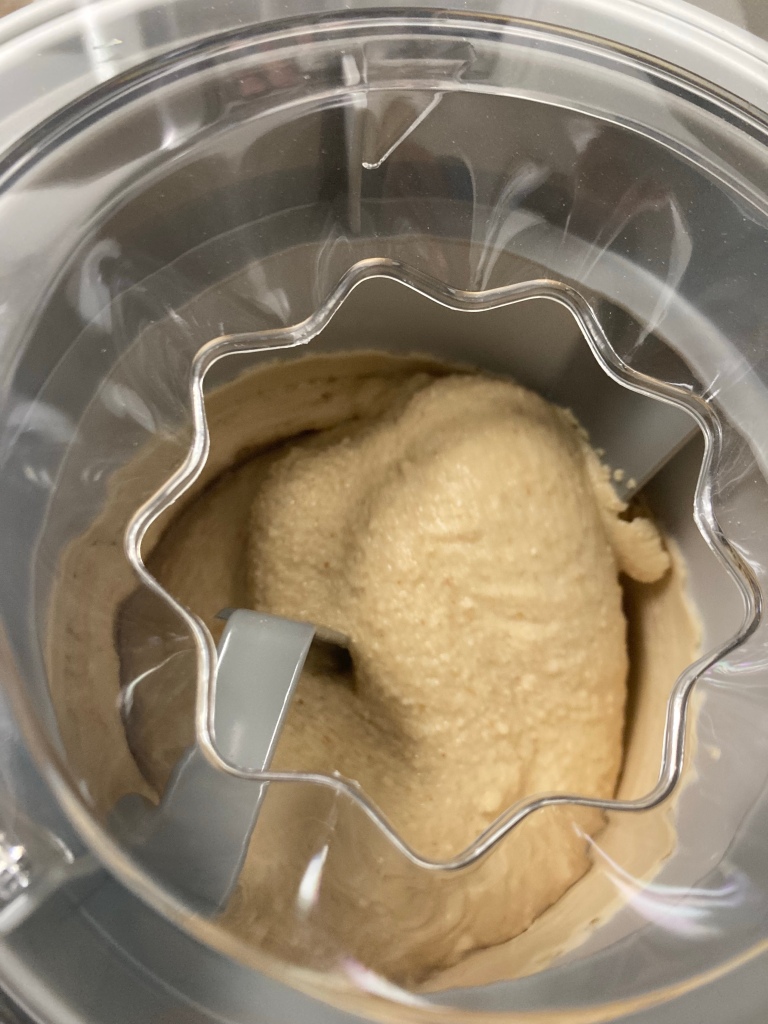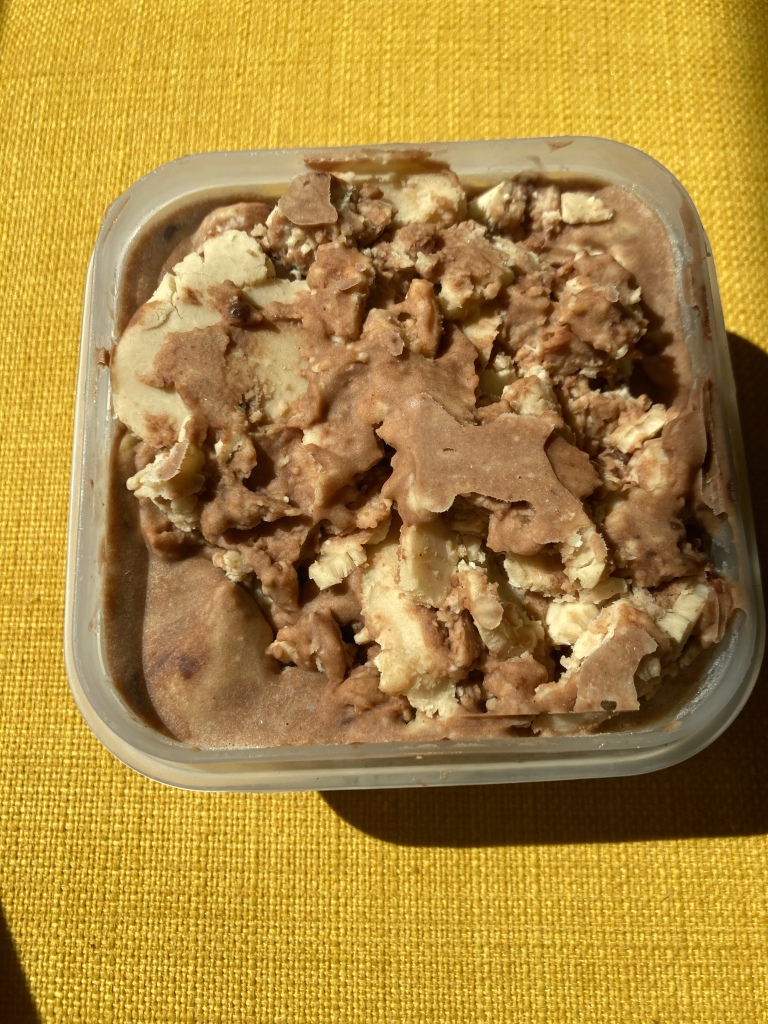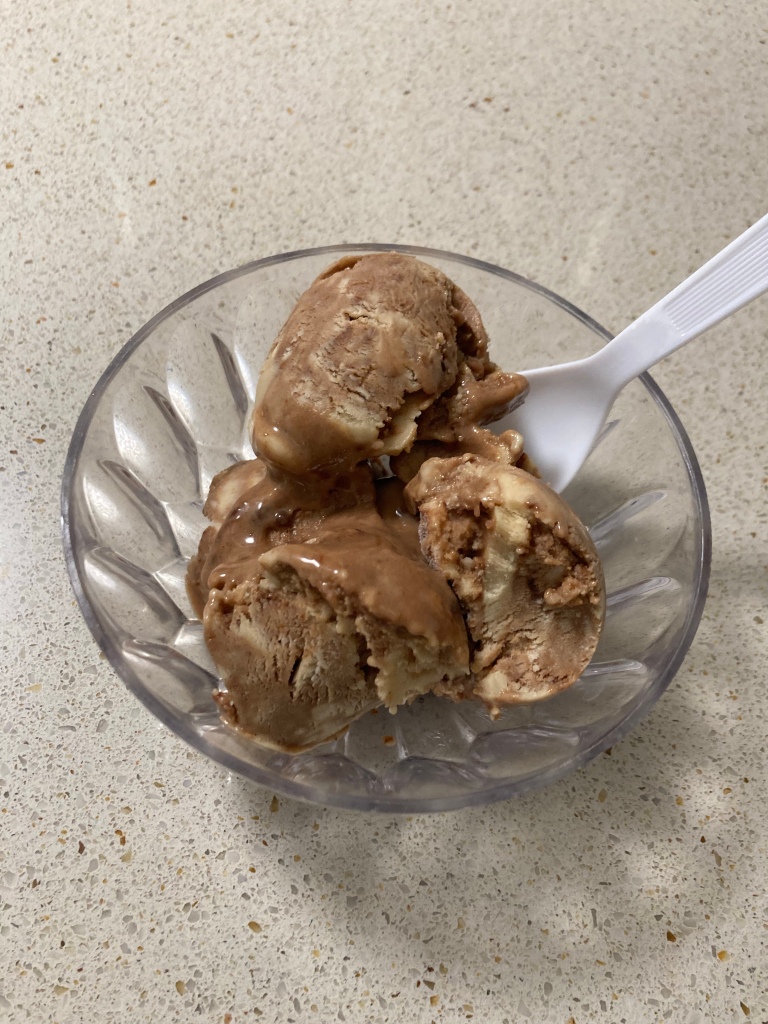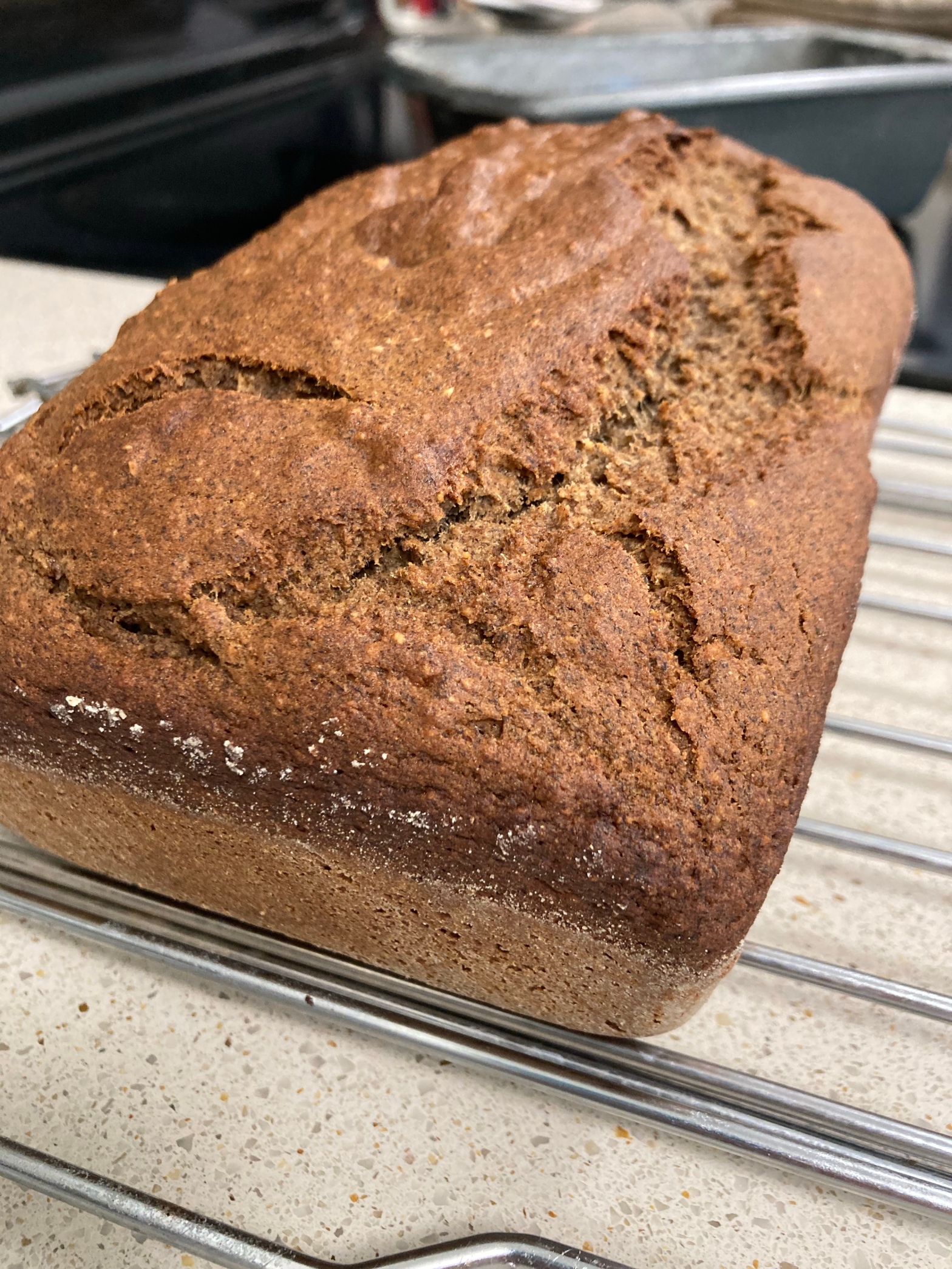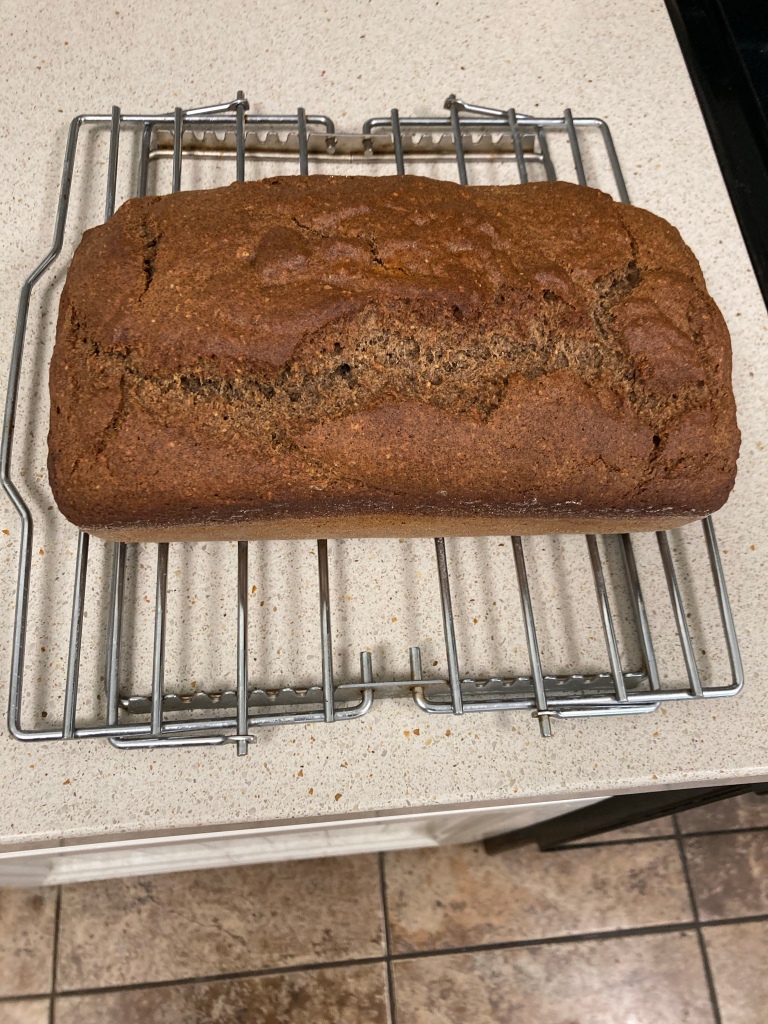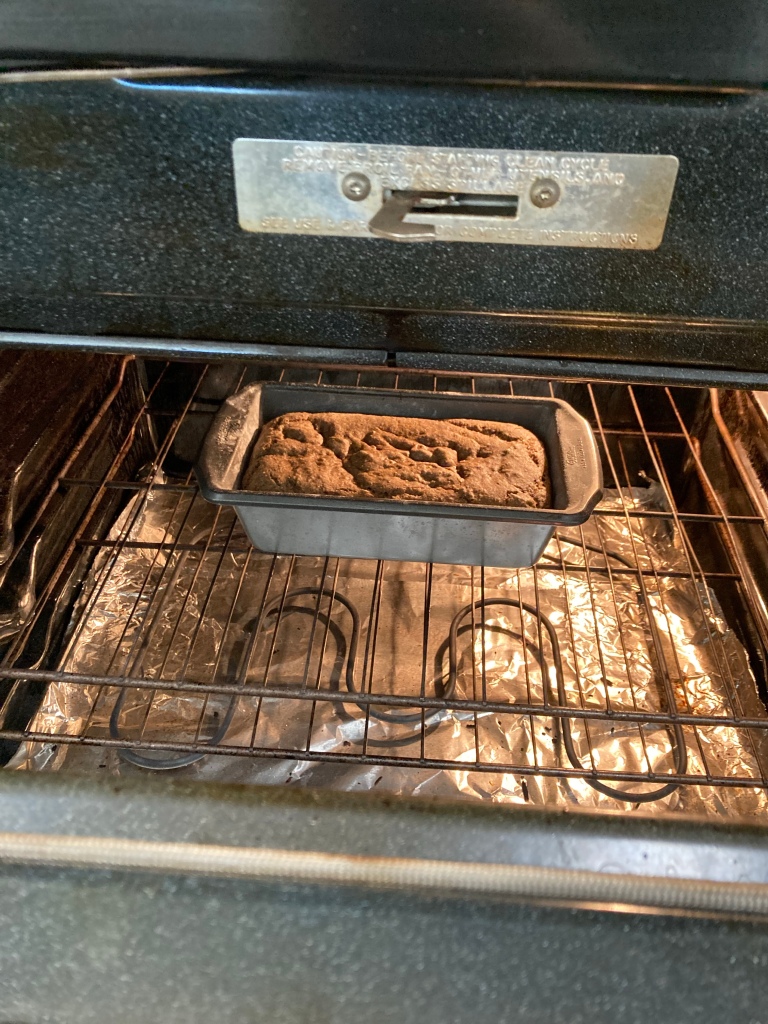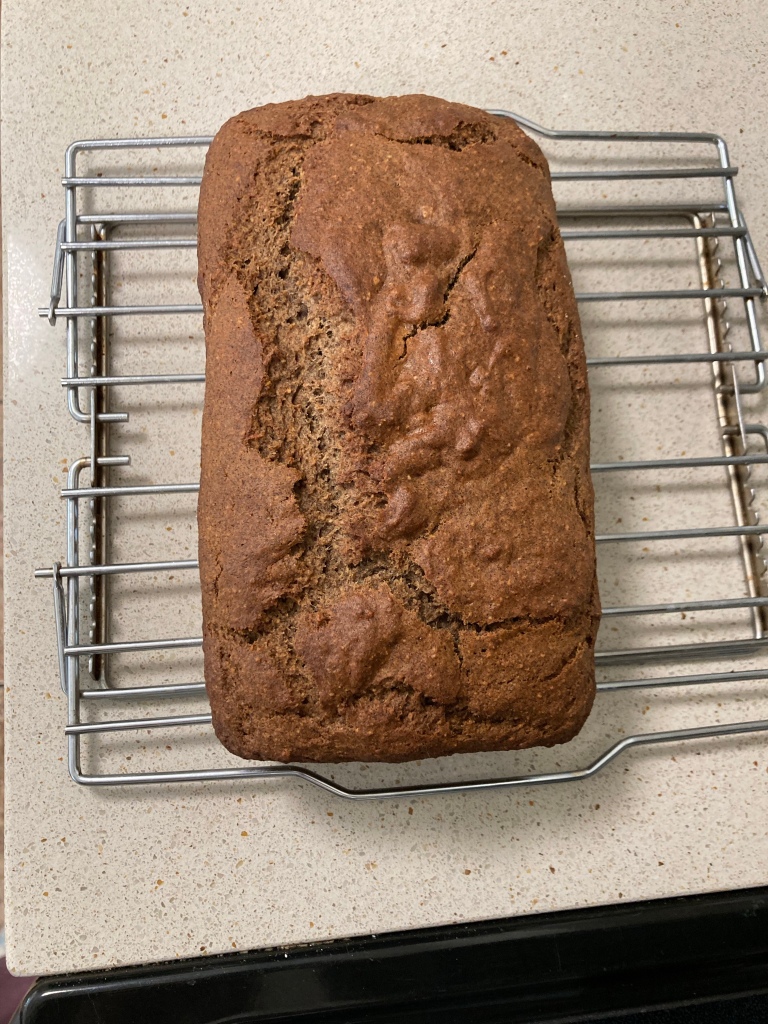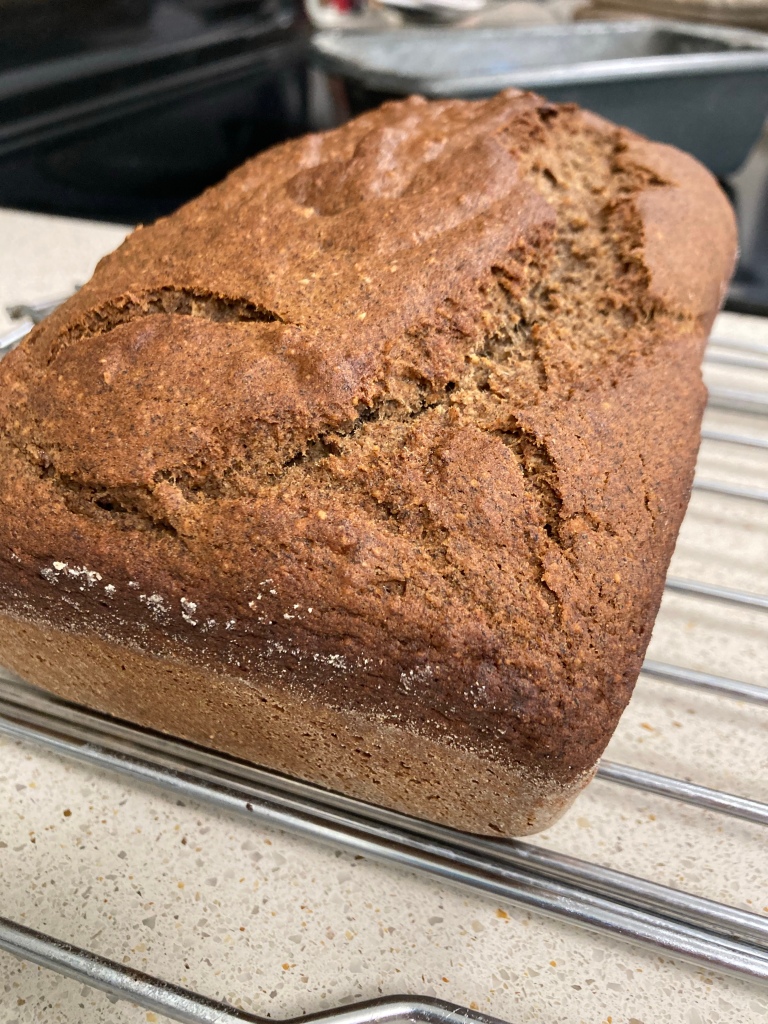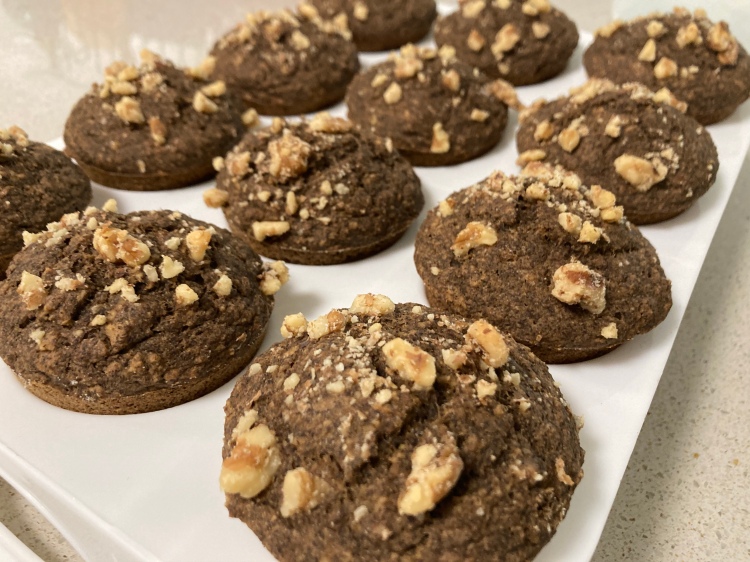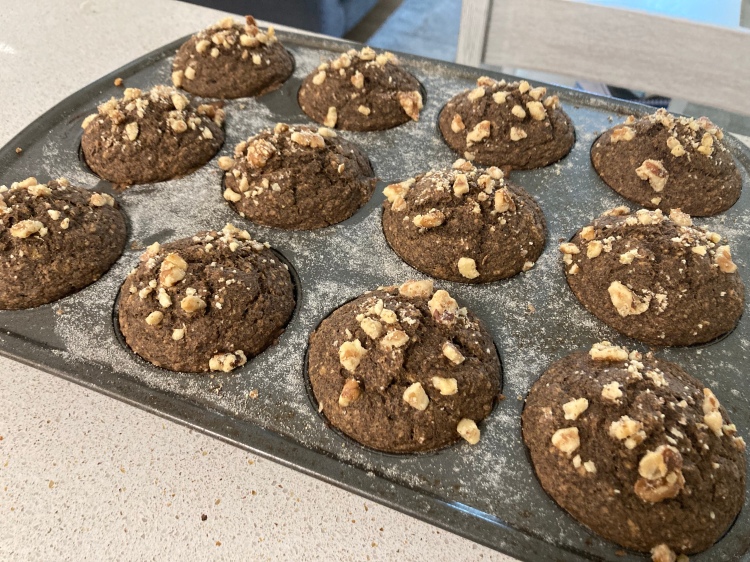I am currently reacting to tomatoes, and my go-to roasted bell pepper sauce does not sound appetizing at all. So when I started craving lasagna, it took me several days to figure out how to work around all my parameters and food allergies.
But I did it!
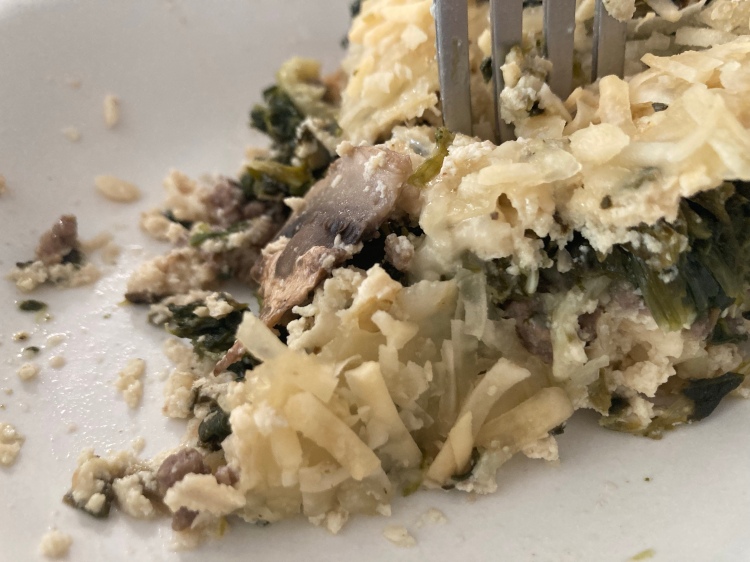
Here is a tasty veggie and meat lasagna without gluten, dairy, eggs, tomatoes, or sauce! I’m including lots of variations for those of you who have different specifications to meet. Please let me know if you give it a try!
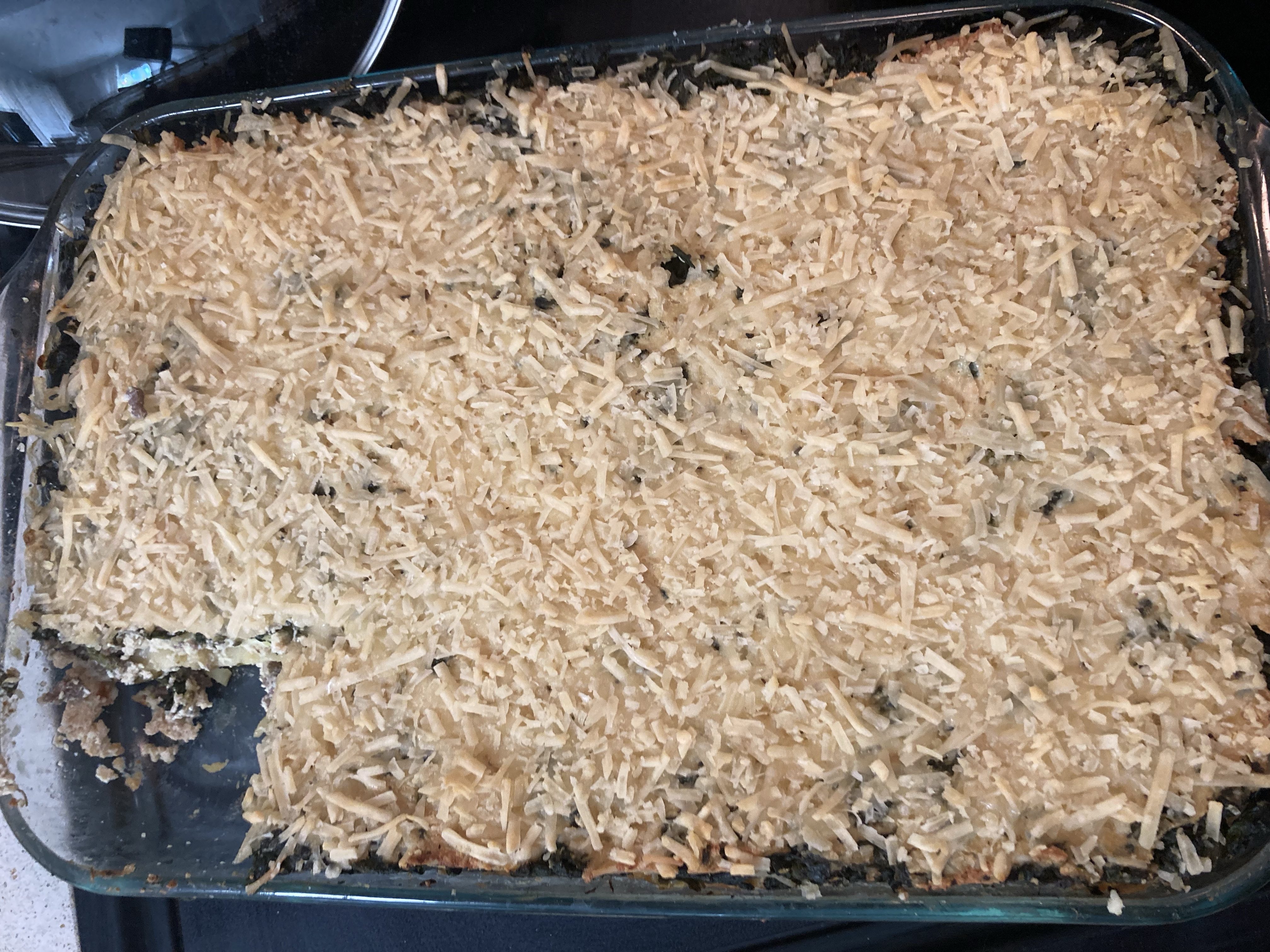
Layers
For my veggie and meat lasagna, I am using a lot of raw veggies to add moisture. This is essential since I am skipping the sauce. However, you could pre-cook your veggies and use a sauce instead.
Veggies
For veggies, I use: zucchini, mushrooms, and frozen spinach. If you can tolerate it, sliced tomatoes are the missing flavor in this combo. Alternatively, you could use yellow squash or Mexican squash, skip the mushrooms, and do extra meat or cheese to make up for no spinach.
Meat
I like to use lean ground beef for my lasagna. You can use Italian sausage, ground pork, ground turkey or chicken, or skip the meat altogether. I always flavor my meat with Italian dry seasoning and fresh minced garlic while cooking. It’ll also need a fair amount of salt.
Cheese
My cheese is a tofu ricotta and store-bought vegan cheeses. This ricotta is THE BEST dairy free thing I make, so try it before you count it out. When baked into these layers, you can’t tell the difference. My cheese-loving husband’s words. I make a double batch for lasagna. Use a vegan mozzarella that you like. Since I’m leaving out sauce, I am also using vegan shredded parmesan for added flavor.
*If you can’t eat soy, you’re going to want to use extra shredded cheese or try a nut-based homemade cheese sauce. Alternatively, you could make an easy white sauce and add lots of vegan shredded cheese.
Noodles
My favorite gluten free vegan lasagna noodle is corn based. It just holds liquid better and reheats without going mushy. You can use a rice based noodle, but it may get mushy when reheating leftovers, so consider making a smaller batch. If you are able to use regular lasagna noodles, I recommend pre-cooking or soaking for 30min in cold water to make up for the lack of liquid in this recipe.
Sauce
This recipe has no sauce! Instead, we are using raw veggies and a little veggie or chicken stock. If you want to skip noodles altogether and use zucchini instead, you do not need broth either. If you like sauce, I’ll include a couple recipes for you below.
My grocery list:
- 1lb lean ground beef (equals 1 thin layer)
- 2 containers of extra firm organic tofu (ricotta)
- 1c raw cashews (ricotta)
- 2-3 lemons (ricotta)
- 1/4c nutritional yeast (ricotta)
- approx. 1/2c cashew milk or soy milk (may sub with any except coconut)(ricotta)
- 1 box gluten free lasagna noodles (my favorite)
- 3-4 medium zucchinis (or squash)
- 1/2lb whole mushrooms (can sub canned)
- 1/2-1lb frozen chopped spinach, thawed (1lb equals 1 thick layer)
- vegan shredded cheese, mozzarella style
- vegan shredded parmesan (for spinach)
- salt, pepper, Italian seasoning, minced garlic, onion powder
- 1c veggie broth or chick broth or water
Helpful to have:
- large sharp knife for mushrooms
- wooden spoon for meat
- food processor for ricotta
- mandolin slicer for zucchini
- cutting board
Prep order:
- Chop veggies & thaw spinach. *Can be done ahead of time and stored in fridge.
- Make vegan ricotta. *Can be done days before.
- Cook noodles & meat (skip if using GF noodles). *You can pre-cook regular noodles and store them in the fridge. Same with the meat.
- Layer! Preheat oven while layering.
- Bake or freeze! *I have not tried freezing this raw.
Bakes at 350 degrees Fahrenheit for 1 hour in 9″ X 13″ large glass casserole dish
- I make the ricotta first. You can use store-bought ricotta instead, about 16oz, and mix 2 eggs in if you can eat them. When I make the recipe from From My Bowl, I do not add any extra seasonings, but Italian seasoning would be a good add in.
- Cook the meat on medium in a large skillet. Add about 1 tsp of Italian seasoning, 2 tsp of minced garlic (2 cloves), and salt. Continue breaking it up as it cooks so you end up with very small pieces. You can add extra spices if you want to kick up the flavor. Cayenne or red pepper flakes would give you some spice.
- Cook your noodles if using the regular kind. Skip if gluten free or omitting.
- Wash your produce, then slice your mushrooms thinly. Use a mandoline for the zucchini if you have one. I used the 2nd thinnest setting. Make sure you cut the ends off and discard.
- Assembly! Start by adding around a cup of broth (or water or *sauce) to the bottom of your empty lasagna dish. You want it to be a few times thicker than your noodle width. This ensures the bottom layer of GF noodles get cooked.
- I add 6 noodles next. 4 standing up and 2 long-ways on the bottom to fill gaps. You can add more, less, or break them to fit better, just remember: the more noodles, the more liquid needed.
- Next, I add a layer of zucchini sliced thin long-ways to mimic noodles. Use the thinnest or 2nd thinnest setting on your mandolin. You can slice these by hand, but they will turn out thicker. Slice them like a cucumber for better control. (This takes longer to lay in the pan.) Lightly salt the top of the zucchini to help them release their water, and for flavor.
- Add a thick layer of *ricotta. (*I add the 1/2c of milk into the vegan ricotta for extra moisture when not using sauce.) From my double batch, I use about 40% to make this thick layer. You can add Italian seasoning on top if you want.
- Next, add the meat in a thin layer.
- More noodles.
- Ricotta again. 40%.
- For spinach, you can spread it out and then add the full container of parmesan (approx. 1/2c), salt, and pepper, or you can mix it all together in a bowl first. My layer was quite thick, so use less spinach if you don’t want it to dominate the flavors. Yes, you can use fresh spinach, but I can’t promise it will provide enough moisture or space for more layers. *A fun addition her could be some quartered artichoke hearts mixed in with the spinach.
- Add a final layer of zucchini. Lightly salt.
- Spread the remaining 20% of ricotta thinly over the top. Add a generous layer of mozzarella.
- Bake! Without a covering, I baked mine for 1 hour, or until the liquids are visibly bubbling. Your vegan cheese will likely not look melted. You can try broiling for 1-2min, but you may just get some harder cheese. This happened to me with one particular brand.
*If you are worried about moisture content, you can cover the lasagna with aluminum foil while it bakes. Feel free to mix up the layer order too!
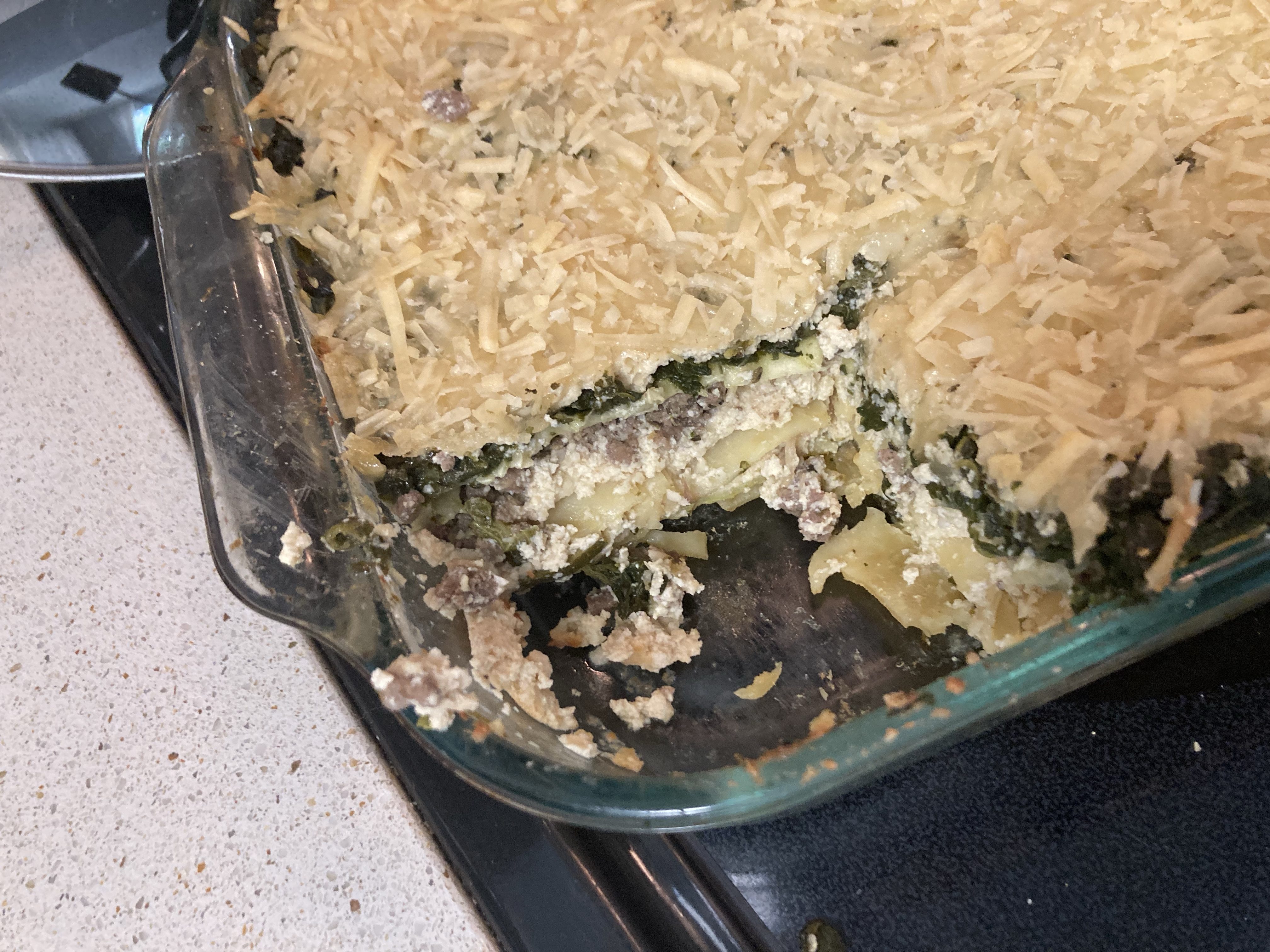
Alternative Sauces
Red
Typically, you would use canned crushed tomatoes or a pasta marinara sauce in lasagna. You can buy low FODMAP sauce at some health food stores if you have a garlic or onion intolerance, or just used crushed tomatoes in your meat. About 28oz per lb of meat. Or skip the meat and just use the tomatoes/sauce.
Veggie
My favorite tomato-free lasagna sauce is a roasted red bell pepper sauce. I just use the sauce from this recipe. *Tip, blend this in a high speed blender, not a food processor. You probably do want to double this for lasagna.
White
Traditional white lasagna uses a béchamel sauce, which is a fancy way of saying milk sauce. You can research your own version, but for lasagna you are going to use something like this: 4c milk (sub DF), equal parts butter and flour (sub cornstarch, or other thickener but cut amount in 1/2) and some seasonings. You start by melting the butter (sub vegan butter), add the flour/starch, and cook until thick (1-2min), then slowly add the milk. Simmer and stir until thickened like a creamy sauce. Use salt, pepper, and even a pinch of nutmeg (best with dairy).
*Any of these sauces can be added on top of a noodle layer in the lasagna, or mixed together with the cooked meat. Always use a layer on the very bottom and very top, right before the mozzarella topping, to keep the lasagna moist.
Allergy Substitutions!
I’ve included quite a few in my recipe, but I want to cover all the bases.
You can leave out the cashews. This will effect the taste of the ricotta, but not the bell pepper sauce. You can use a little cornstarch to thicken the pepper sauce if you want, but it won’t matter once the lasagna is cooked.
If you have a lemon allergy, I have no idea what to sub for lemons in the ricotta. You could try a tiny bit of vinegar, but I think that would be too strong. Any ideas?
IF you do not want to use any veggies in this recipe, use more meat and more noodles. Your layers will be thinner, and that’s ok. Adding a sauce will help with this.
No meat: theoretically, you could use only GF noodles and vegan cheeses to create a thinly layered lasagna, but you’re going to lack moisture. Either use a sauce, or add extra veggie broth and DF milk, then bake covered with foil. There isn’t a neat protein substitute if you want to leave the meat out of my original recipe, but the soy-based ricotta will already have some protein.
Replace ALL the noodles with zucchini! I’ve done this many times before. Just make sure you slice it thin or you will not have room for very many layers. If you do this, you can actually skip adding broth to the bottom. If you use a sauce, try pre-cooking the zucchini without salt to lesson the residual moisture, otherwise you’ll have a soggy bottom when you cut into the lasagna, speaking from experience. Leaving the salt out helps the zucchini look less wilted.
Add ins and subs: peeled eggplant instead of squash, use a butternut or winter squash with just cheeses and meat, layer some sliced tomatoes or fresh basil, baby kale or other greens instead of/with spinach, sliced bell peppers, more cheeses! Any other suggestions?
I would love to try a Mediterranean inspired lasagna! I would use Mediterranean spices, ground turkey (subtle), feta, olives, artichokes, spinach, and a white or red sauce-or skip the sauce!
How do you make lasagna?
